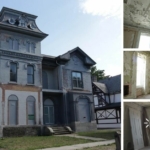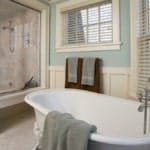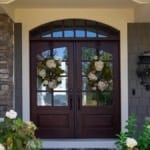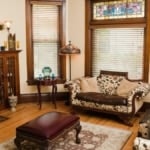1900s House Plans
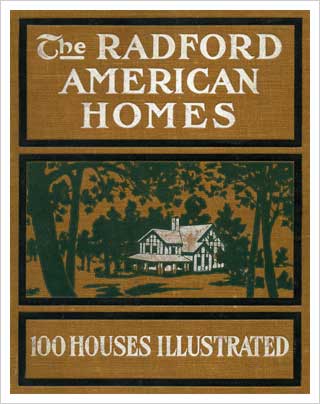
The Radford American Houses: 100 Houses Illustrated
This little book contains 100 vintage house plans designed by the William A. Radford Architectural Company.
The houses are billed in the introduction as low and medium-priced houses and is the continuation of the work “which was begun in The Radford Ideal Homes and which met with such phenomenal success all over the world.”
There are pithy bits of advice and cost estimates on each page in the book.
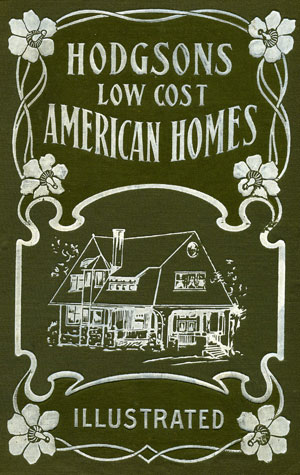
1905 Hodgson House Plans: Early 20th Century Homes
Hodgson’s Low Cost American Homes was published in 1905. The house plans shown are representative of the majority of houses built in the late 19th and early 20th centuries.
The buildings range in size from small, four-room cottages and capacious early foursquare farmhouses to palatial late Queen Annes and Victorian Stick Style homes. In addition, there are plans for churches, schools, and even an Iowa barn.
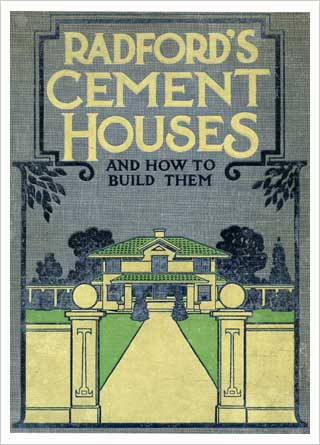
1909 Radford’s Cement Houses: One Story Plans
Of the different vintage house plan books we’ve published here on Antique Home, the 1909 Radford Cement Homes book is slightly different. As expected, the houses include the typical bungalows and four squares rendered in concrete blocks or cement plaster instead of wood.
This book goes beyond that, though. As you page through the various plans, what may catch your attention is the remarkable array of unusual homes with bungalow and Prairie styling. There are many oddball characteristics that we expect you’ll find interesting.

1909 Radford’s Cement Houses: Two-Story Plans
As was noted on our Radford one-story cement homes, these Radford plans capture many of the quirks and idiosyncrasies of the range of architectural design changes taking place in the earliest years of the 20th century.
Chicago was at the epicenter of many of the new trends and nowhere is that more evident than in the plans for many of the Radfords homes shown.
Unlike the single-story homes, these are much larger and better suited to larger families.
1910s House Plans
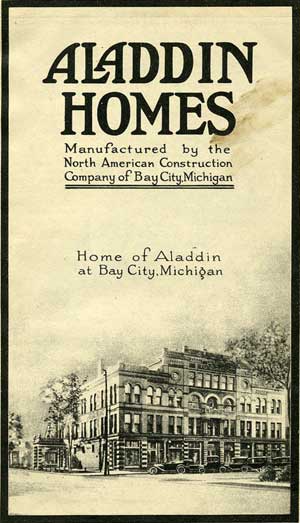
Aladdin Kit Home Plans for 1916: Whether Large or Small, Aladdin Homes Delivered
The Aladdin 1916 catalog reflects Americans’ desire for a comfortable, affordable home, especially when the prospect of war is on the horizon.
In addition to the house plans listed, the 1916 catalog includes plans for tiny summer cottages, optional additions, and barns. Other options include bathroom fixtures and full suites of matched light fixtures.
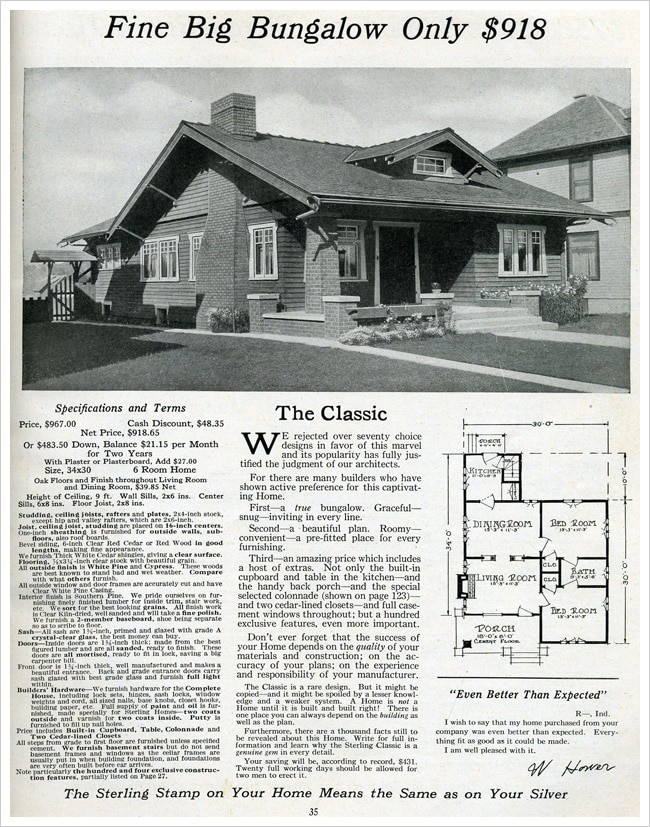
1916 Sterling Homes: The Sterling System by International Mill & Timber
Other vintage kit home manufacturers were busy in Bay City, Michigan, but none were busier or more aggressively marketing their houses than International Mill & Timber Company. Their houses used what they referred to as the “Sterling System” of construction.
An interesting feature was the terms by which the prospective buyer could acquire the home. Sterling offered the first mortgages in the kit home business by selling the houses for 50% cash down. The company would carry the balance for two years at about 1 1/2% interest.
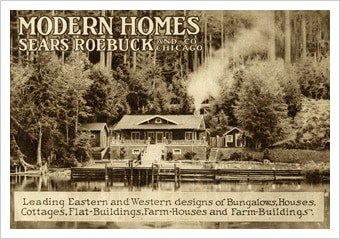
1916 Sears Roebuck Kit Houses: Late Queen Anne to Craftsman Bungalows
Competing with other kit home builders in the first quarter of the 20th century, Sears offered an assortment of home plans and kits that had appeal to a broad spectrum of home buyers.
Small bungalows, large farmhouses, four squares, and lightly decorated Queen Anne styles provided something for nearly everyone. All were available by order from the catalog to be delivered to the buyer’s local railroad depot.
All parts and materials were included in their kit houses. All the new owner needed to do was assemble his team of carpenters and someone to haul it to the prepared home site.
1920s House Plans
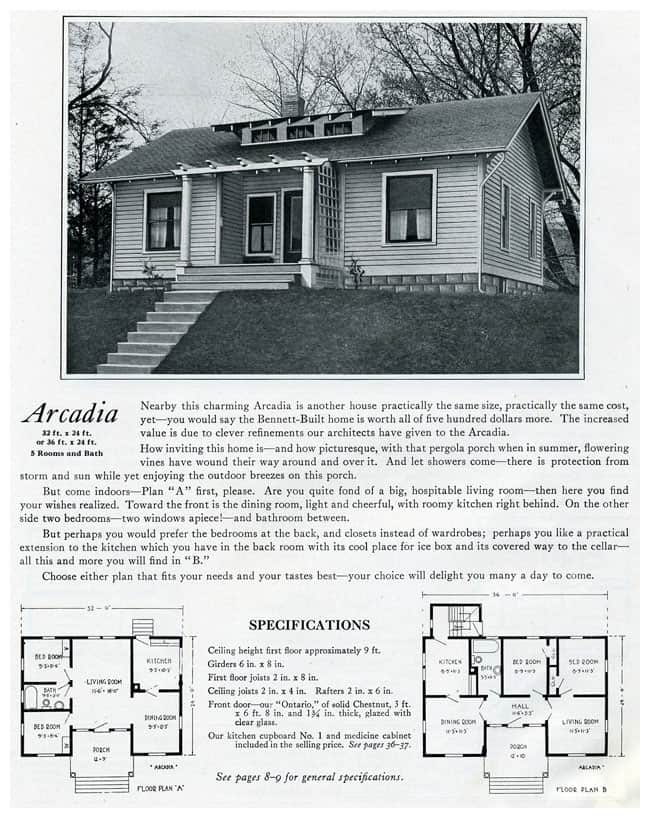
1920 Bennett Homes
In 1920, Ray H. Bennett Lumber Company of North Tonawanda, New York published its 14th catalog of ready cut homes. Like Sears and Aladdin, Bennett sold kit homes from currently popular plans.
Once ordered, each house was crated and shipped from Tonawanda to its new owner. Bennett Homes are concentrated in the Northeast and Mid-Atlantic states, as well as into the upper Midwest.
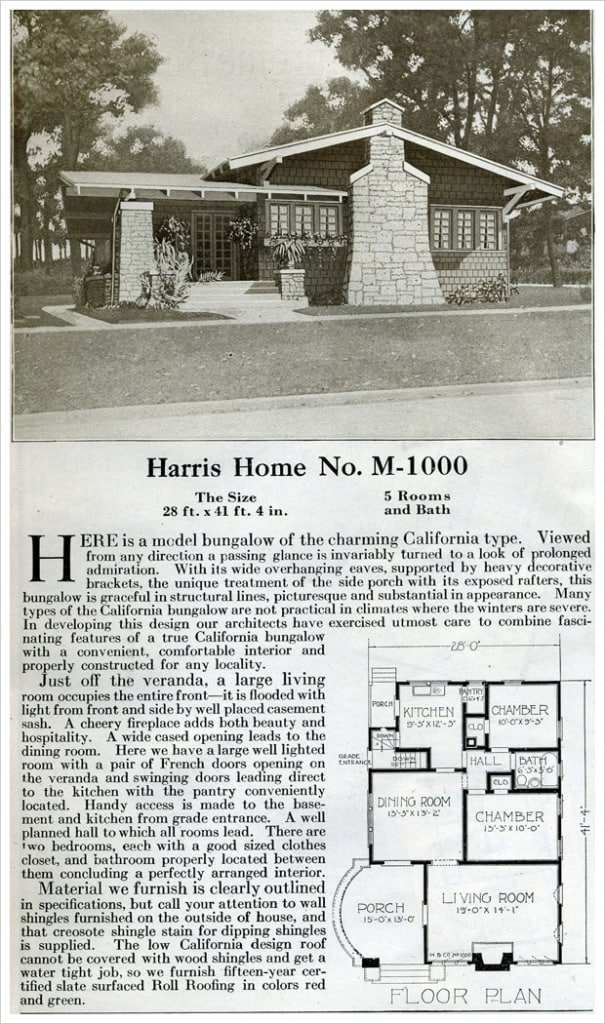
1920 Harris Homes
Like its competitors, Harris Homes by the Harris Brothers of Chicago, Illinois, were active in the kit home business during the first decades of the 20th century. The slide show is the entire 1920 Harris Bros. house plan catalog. The links to the left are some of our favorite houses with floorplans.
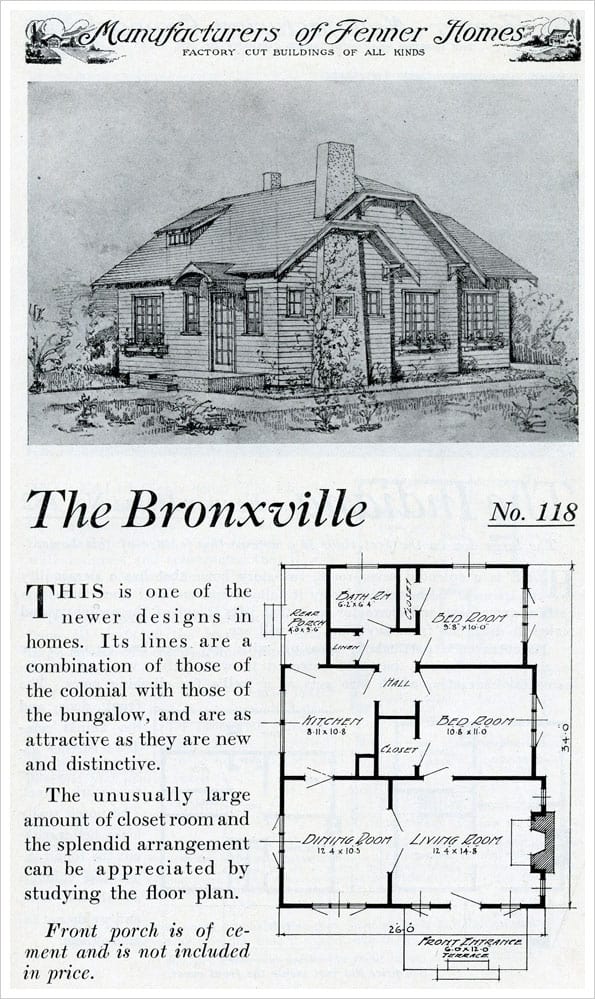
1921 Fenner Manufacturing Ready Built Homes: Portland Kit Home Manufacturer
John Harvey Fenner, late of Bay City, Michigan, set up business as a lumber dealer in 1912. By 1916, the Ready Built House Company was providing kit homes to home buyers across the US. Few records exist of the Fenner Company.
It’s location on the Northern shore of the Willamette River is obscured by time and development. However, in 1921, Fenner Manufacturing was in a new manufacturing facility with access to both the river and the railway yards.
The homes offered are similar to those built by many of the other companies, but possibly with a bit more of a Northwestern flavor.
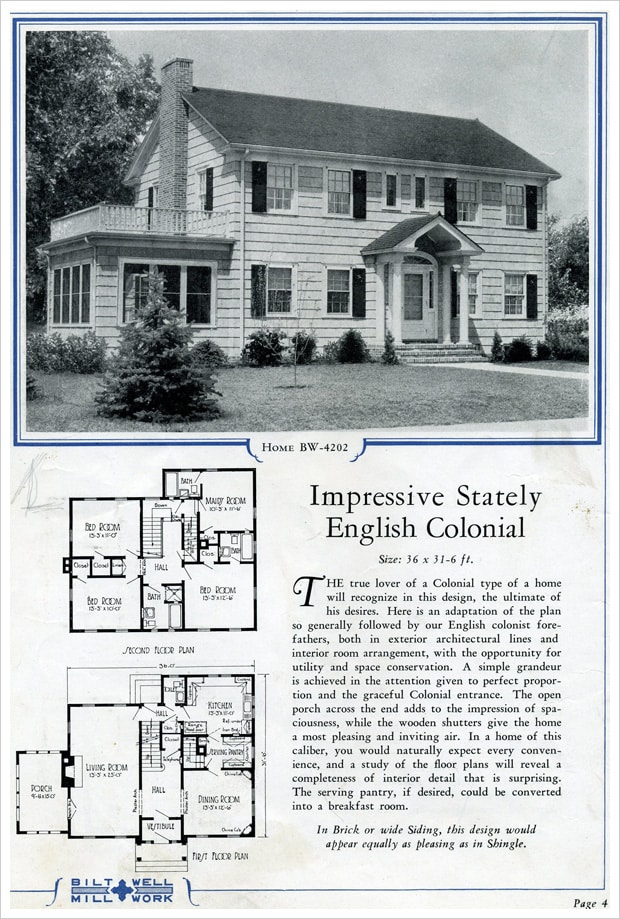
1924 Bilt-Well Homes of Comfort
Known for its millwork and other wood products, Bilt-Well published its Homes of Comfort during the mid-1920s. Below you will find the entire house plan catalog, including close ups of most of the houses. To the left you will find links to our favorite homes that do not require flash.
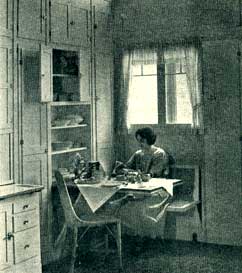
William A. Radford House Plans: 1925 Home & Fireside
“Home and Fireside” was published in 1925 by William A. Radford.
It contains only sixteen vintage home plans, but unlike many of the plan books of the 1920s, this one is printed in color and contains not only the plans themselves but interiors, vintage decor, and gardening ideas.
Whether you own a vintage Radford house, want to build a small home, or simply like looking at the illustrations, this little publication will provide plenty of enjoyment.
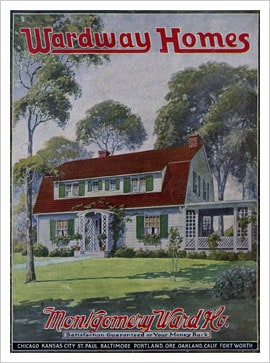
Wardway Homes by Montgomery Ward & Co.: Popular 1920s American Bungalow Styles
Wardway “ready-cut” homes were sold by Montgomery Ward from 1922 to 1931. Montgomery Wards got into the housing market about the same time Aladdin and Sears were offering homes by mail, but didn’t offer more than plans until 1922.
The plans on the following pages were identical with plans offered during the same years by the Gordon-Van Tine company of Davenport, Iowa. Only the model name and cost differed.
Montgomery Ward became a casualty of the economy during the Depression years, and discontinued selling its homes in 1931. Like Sears, Montgomery Wards had offered financing. When the market collapsed in 1929, the ensuing failed mortgages took their toll on company revenues.
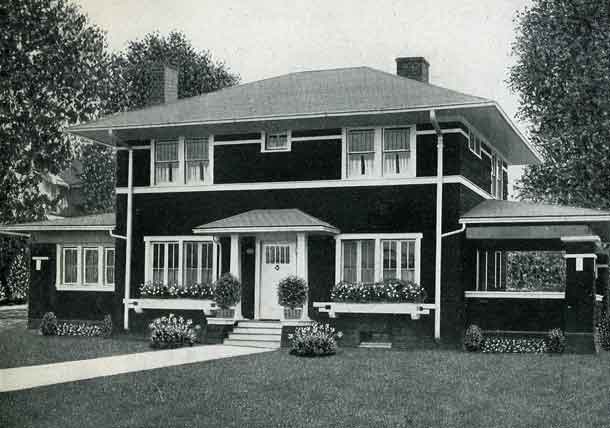
Standard Homes: Plans For 1926
Standard Homes Company was built up from a single plan book created by A. Gales Johnson in 1917. For more than 80 years, the company has continued a family tradition of offering home plans across a spectrum of needs to builders and homeowners.
Because of the size of the catalog, we have split them into two directories. Models with names beginning with A thru L are listed here. Models with names beginning with M thru Z are listed separately.
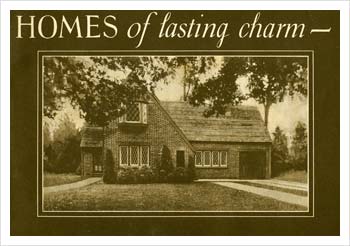
1927 Brick Houses of Lasting Charm: Common Brick Manufacturers Association of America
There is something about a brick house that ordinary wood frame houses never capture. Even the charm and grace of a wood Craftsman bungalow can’t compete with the sense of timelessness and permanency of a brick home.
An unusual brick pattern, leaded casement windows, a cottage style combine to create what many consider to be the quintessence of the perfect small home.
This small book of vintage plans created during the latter half of the 1920s showcases the variety of small brick home plans that were available at the time. We think they will entertain and inspire you.
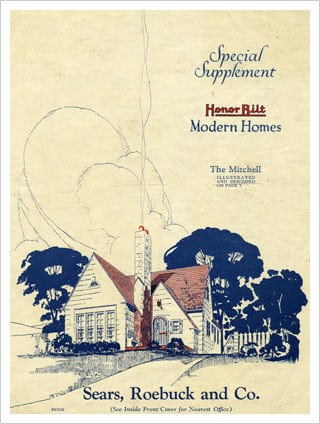
1928 Sears Honor Bilt Homes: Special Supplement
Honor Bilt Modern Homes are featured in this Sears Special Supplement, which was published about 1928.
There are 14 house styles that range from Craftsman bungalows to home styles reflecting Mediterranean and English cottage influences. Two house models have alternate floor plans that attest to their popularity.
In size, these Honor Bilt Modern homes are comparable to other kit homes that were produced during this period. Like the Aladdin homes, the Sears homes were available “Already Cut” and fitted for easy assembly on site.
So timeless are many of the styles, it’s easy to imagine building a home of this type now. It might entail modest updates, but overall the inherent design of each of these small homes has easily stood the test of time.
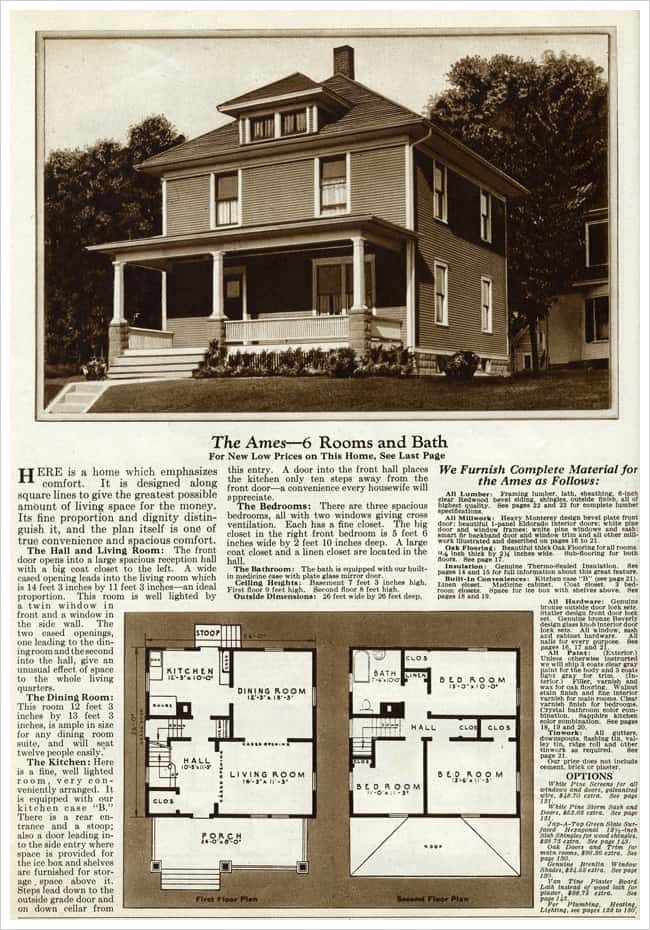
1925 Gordon Van Tine Homes
Gordon Van Tine, like the other vintage kit house manufacturers, offered a wide range of kit homes in various styles during the first half of the 20th century.
Delivered to the home owner’s city from a manufacturing facility, each home came virtually complete. Everything was included.
The homeowner had to construct the foundation and begin assembling the home from pre-cut pieces according to the building instructions.
With the help of a few friends or family members or by hiring a local carpenter, American homeowners could construct handsome, high-quality homes for less than having a comparable home built locally.
1930s House Plans
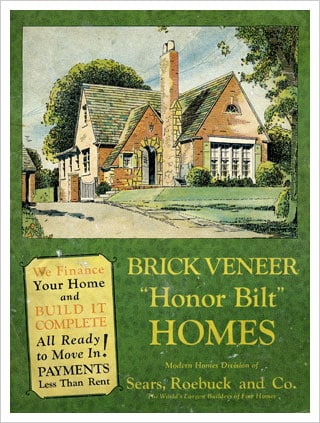
Sears Honor Bilt Homes: Brick Veneer Houses
This is the introductory catalog of Sears Brick Homes. Sears shipped all of the kit to you by rail, including the bricks.
“During the past 15 years Sears, Roebuck and Co. have furnished 45,900 ‘Honor Bilt’ homes to Home Builders of America, and are proud to say that we have 45,900 satisfied customers.”
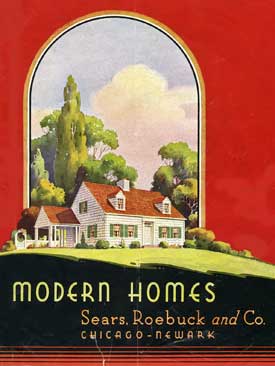
1935 Sears Honor-Bilt Homes
Honor Bilt Sears homes were known throughout the US as well-made, comfortable, and affordable.
The pages listed in this directory are the complete catalog of homes for 1935 and styles range from bungalows and small Tudor style cottages to homes influenced by some of the modern trends of the times.
The Honor Bilt homes were part of a profitable business model shared by Aladdin and other home manufacturers. Each home was packaged pre-cut and then shipped to the location. The homeowner could literally build his own home from the materials sent. Instructions were included.
The craftmanship and materials were as good as any available on the market at the time and today, these kit homes are being sought by home buyers for their charm and quality.
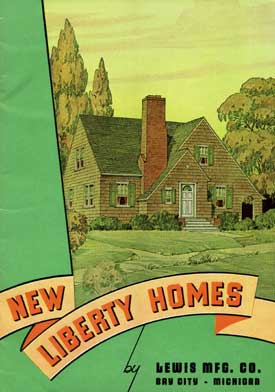
Liberty Homes for 1939 by Lewis Manufacturing
Liberty Homes were manufactured by Lewis Manufacturing Company of Bay City, Michigan. They were direct competitors of Aladdin and Sterling, also located in Bay City. Lewis produced much the same style of home offering the same ready cut construction.
Lewis began selling homes in 1913 and sold 60,000 over the course of its 60 year history. Lewis Manufacturing went bankrupt in 1973.
1940s House Plans
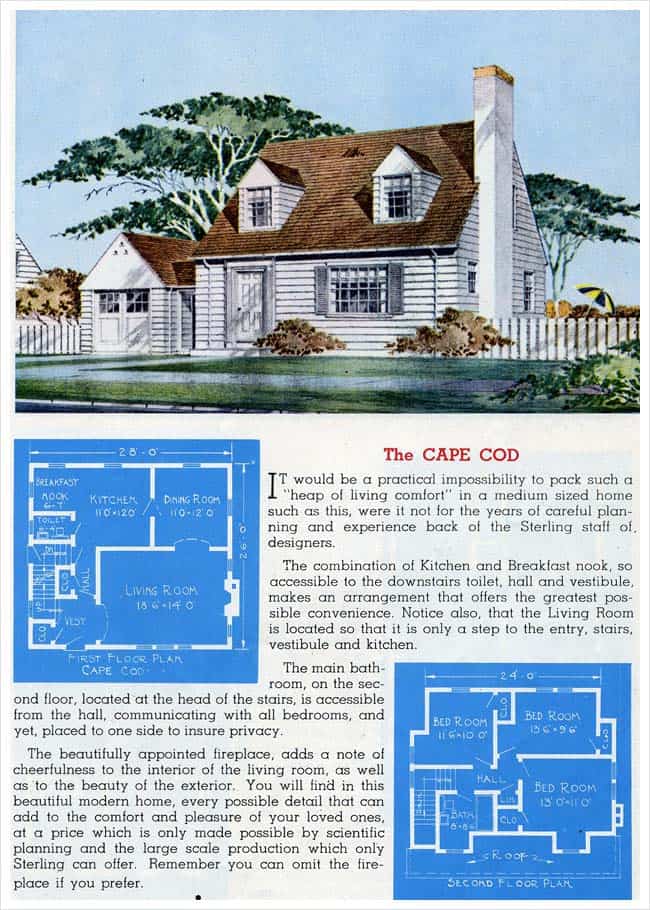
1945 Sterling House Plans
Sterling house plans for 1945 reflect the architectural styles prevalent before World War II but begin to hint at the changes to come.
These homes are typical of the modest bungalows and minimal traditional style houses that sprouted up in profusion around the US as GIs returned, purchased homes, and started families. Built in tracts by developers and individual property owners hoping to cash in on the hunger for housing, they appeared in clusters and infill.
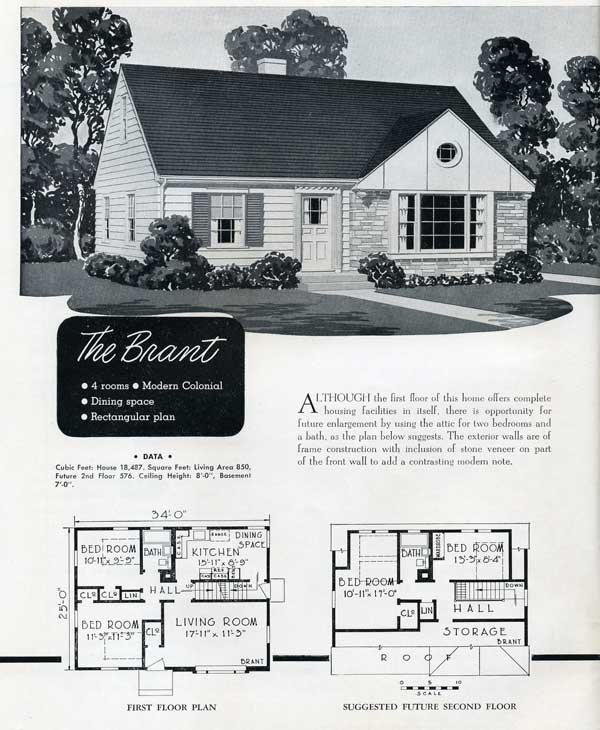
1949 National Homes of Moderate Cost
After World War II, there were millions of young families who took advantage of the GI Bill to purchase homes. Small starter homes were produced across America.
These house plans, designed and sold by National Plan Service, were typical of the type of minimal traditional (transitional) style that presaged the popular ranch that took the country by storm during the 1950s.
These homes were built not only as subdivisions in the burgeoning suburbs, but in ones and twos as homeowners of larger lots divided their own parcels with an eye to making a profit.
1950s House Plans
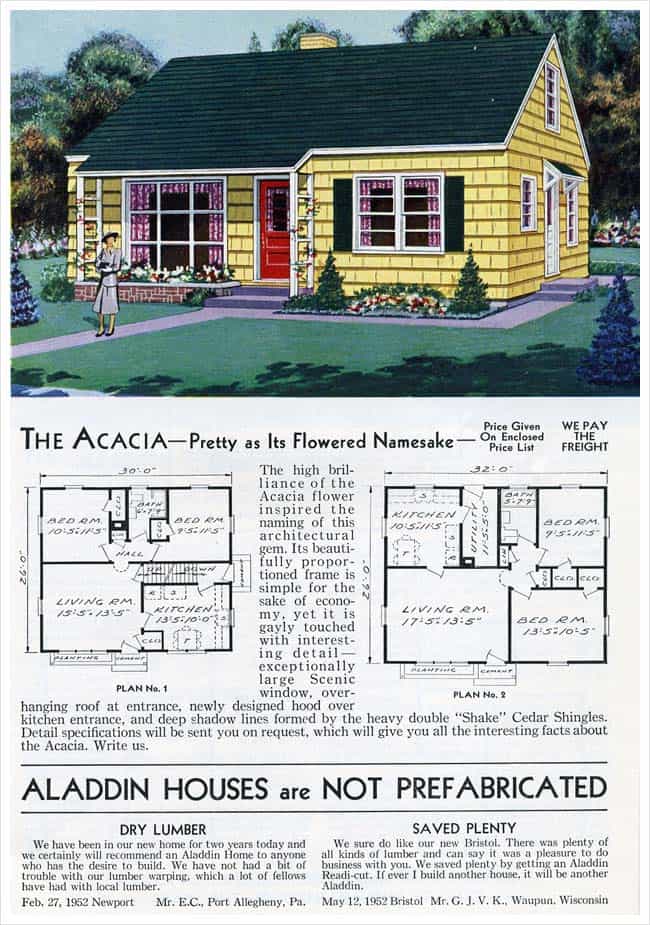
1953 Aladdin Kit Homes
Aladdin’s 1953 catalog of homes has a cross section of homes that span the styles of the late 30s and 40s minimal traditional to the increasingly popular ranch style. Many of the homes retain the simplicity of the pre-War homes and lack the garages that became so prevalent after World War II.
The slide show below contains images from our Aladdin catalog of 1953 with close ups of the house and some interiors.
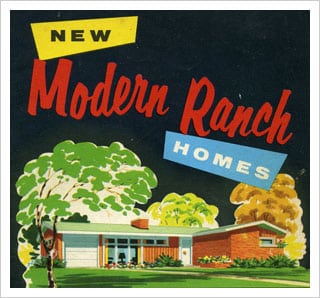
1956 Modern Ranch Homes
Natural materials like wood, brick, and stone are used abundantly. Windows are larger and the large, plate glass windows are common to this style. Single car garages and carports remain secondary to the facade presented at curbside.
These homes are optimistically sunny and modern with “Atomic Style” noticeable through out as modern design meets functionality for the active, young families to whom these designs were targeted.
1960s House Plans
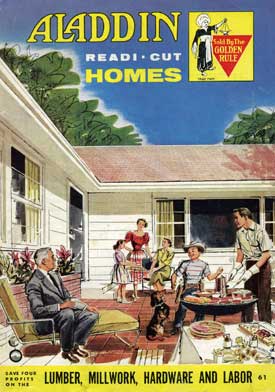
Aladdin House Plans for 1961
The 1961 Aladdin catalog reflects the trends of the early 1960s in this catalog. Most of the homes are “modern” and heavily influenced by the California ranch style.
Carports and garages are often attached. Most plans are a single level, but designed with basements in mind.
Practical as ever, these Aladdin homes reflect the optimism of the period without compromising the functionality or craftsmanship. Millions of this home style were built.

